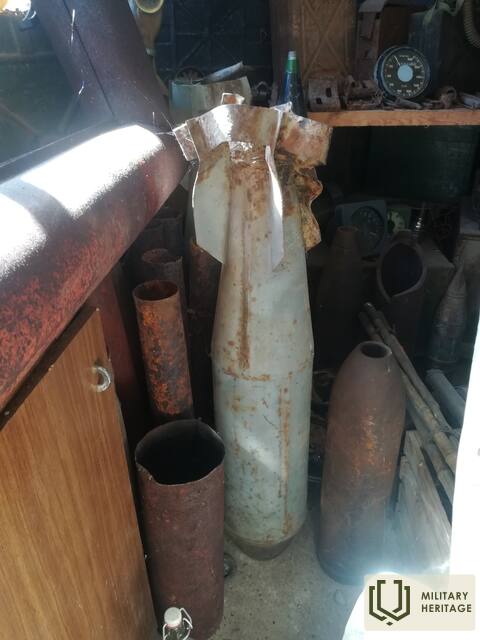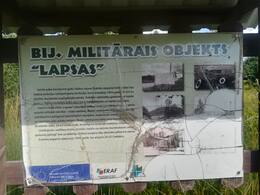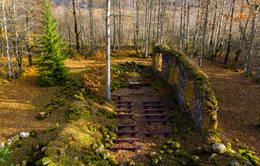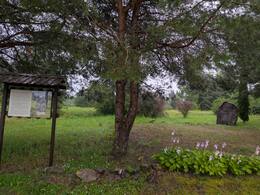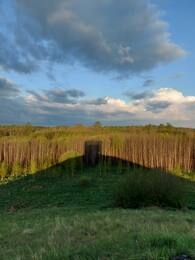Šmeižikiško vaikystė bombų sprogimų šešėlyje – fosforo kapsulės
Vaikystę praleidau netoli Zvārdės poligono, girdint sprogimų ir skraidančių reaktyvinių lėktuvų garsus, tačiau savaitgaliais vis tiek kartais pavykdavo patekti į poligoną. Pasitraukus sovietų armijai, žemė buvo nusėta bombų krateriais ir daugybe sprogstamųjų objektų ne tik iš poligono laikų, bet ir iš Antrojo pasaulinio karo. Berniukai ypač mėgo deginti fosforo kapsules...
Fosforo kapsulių medžioklė
Dvejus metus vasaromis su draugais eidavome į poligoną ieškoti fosforo kapsulių. Fosforo bombos buvo rastos visai šalia pakilimo tako simuliacijų, nes jų funkcija buvo apšviesti bombardavimo zoną naktį bombarduojant. Bombarduojant fosforo bombų kapsulės krisdavo mažais parašiutais ir nusileisdavo virš taikinio, apšviesdamos dangų už kelių kilometrų. Nesudegusias fosforo kapsules išimdavome iš bombų ir panaudodavome Joninių laužuose, nes jos degė itin ryškia šviesa...
Susijusi laiko juosta
Susijusios temos
Susijusios vietos
Zvārdės šaudykla ir buvusi sovietų karinė bazė „Lapsas“
Poligono aptarnavimo bazė yra maždaug 2 kilometrus į rytus nuo Strikių dvaro, prie Saldus-Auce kelio. Į pietus nuo Saldus yra buvęs sovietų karinės aviacijos taikinių poligonas (karinis dalinys Nr. 15439) Zvārdėje. Aerodromo teritorijoje yra keletas lankytinų vietų – Zvārdės ir Ķerklinių bažnyčių griuvėsiai, sugriautos Rītelių kapinės, aerodromo stebėjimo postas, vadinamasis „Karininkų kurganas“ ir buvusi aerodromo personalo bazė bei šaudykla „Lapsas“.
Zvārdės oro taikinių poligonui aptarnauti – taikiniams įrengti, pažeidimams taisyti, oro taikinių poligonui saugoti ir oro skrydžiams koordinuoti – reikėjo maždaug vienos kuopos dalinio. Iki Antrojo pasaulinio karo jis buvo įsikūręs namo, vadinamo „Lapsas“, vietoje. Pastačius aerodromą, buvo pastatytos kareivinės, transporto depo, skrydžių valdymo bokštas ir šaudykla mokomajam personalui.
Latvijai atgavus nepriklausomybę, čia veikė Zvārdės gynybos pajėgų mokymo centras, tačiau nuo 2007 m. ši vieta priklauso savivaldybei, o ją nuomoja keli medžiotojų kolektyvai. Buvusiose kareivinėse įrengta ekspozicija apie Zvardės parapijos istoriją.
Žvėrių bažnyčios griuvėsiai
Zvārdės bažnyčios griuvėsiai yra buvusio Zvardės oro taikinių poligono teritorijoje, netoli vadinamojo „Karininkų kurgano“. Nuvažiavę pusantro kilometro, pravažiuosite T formos sankryžą su netoliese esančiomis Rītelių kapinėmis.
Pirmoji medinė bažnyčia ir klebonija čia buvo pastatytos 1567 m., o mūrinė bažnyčia – 1783 m. vietos valstiečių, Kuržemės didikų ir Kuršo kunigaikščio Petro Byrono lėšomis. Antrojo pasaulinio karo metu kovų metu buvo apgadintas bažnyčios stogas ir bokštas. 1953 m., kai Sovietų Sąjungos gynybos ministerija pareikalavo šioje vietoje įrengti oro taikinių poligoną, Zvārdės bažnyčia, Kerklinių bažnyčia ir Ritelių kapinės buvo įkurdintos oro taikinių poligono centre – šalia dirbtinio aerodromo su privažiavimo keliais ir gynybinėmis pozicijomis, kurį kaip taikinį naudojo sovietų pilotai. Lėktuvai čia skrido iš aerodromų Latvijoje ir kitur Sovietų Sąjungoje. Per mažiau nei 40 metų bažnyčia, kapinės, buvę dvaro rūmai ir dešimtys aplinkinių pastatų virto griuvėsiais.
Ryto kapinės
1953 m. SSRS gynybos ministerijos prašymu šioje vietovėje įkūrus aerodromą, Zvārdės bažnyčia, Kerklinių bažnyčia ir Ritelių kapinės iš tikrųjų buvo aerodromo centre – šalia dirbtinio aerodromo su privažiavimo keliais ir gynybinėmis pozicijomis, kurį kaip taikinį naudojo sovietų pilotai. Lėktuvai čia skrido iš aerodromų Latvijoje ir kitur Sovietų Sąjungoje. Per mažiau nei 40 metų bažnyčia, kapinės, buvęs dvaras ir dešimtys aplinkinių pastatų virto griuvėsiais. Šiandien šia vieta rūpinasi Saldaus Martyno Liuterio bažnyčia. Apylinkės vis dar užterštos nesprogusiais sprogmenimis, todėl vaikščioti nuo kelių gali būti pavojinga.
Barbarizmas savo viršūnę pasiekė 1988 m., kai buvo buldozeriu nuverstos Rītelių kapinės su jų kapais ir paminklais.
1990 m. liepos 21 d., per vieną pirmųjų Latvijos gyventojų reikalavimų, kad SSRS armija paliktų Zvārdės teritoriją, Salduse įvyko protesto mitingas, po kurio žmonės vyko į Rītelių kapines. Mitingo dalyviai buvo įleisti į sąvartyną, jie šiek tiek sutvarkė kapines ir iškasė baltus kryžius.
Sąvartynas buvo naudojamas iki 1992 m., ir net 1992 m. kovo mėn. dėl nežinomų priežasčių jame sudužo iš Lielvārdės pakilęs lėktuvas. Latvijos gynybos pajėgos pradėjo išminuoti šią vietą 1993 m. gegužę, pasitraukus Rusijos armijai. 2008 m. Zvārdės gyventojai Rītelių kapinėse pastatė atminimo akmenį „Atleiskite, kad jūsų negelbėjome“.
Sovietų oro pajėgų taikinių šaudymo vieta Zvarde
Zvārdės poligonas yra Zvārdės savivaldybėje, Saldaus rajone. Tai buvęs SSRS karinės aviacijos poligonas, užimantis daugiau nei 24 000 hektarų.
Buvusio aerodromo teritorijoje yra keletas objektų: Karininkų kurganas, Zvārdės ir Ķērklinių bažnyčių griuvėsiai, Rītelių kapinės, buvusi kariuomenės bazė „Lapsas“ ir kiti. Iki Antrojo pasaulinio karo apžvalgos bokšto vietoje stovėjo „Vairogų“ namas. Statant poligoną, tai, kas liko iš ūkio – sienos, obelyno liekanos ir dalis Veczvārdės dvaro griuvėsių – buvo sukrauta į pylimą, o ant jo pastatytas apžvalgos bokštas. Jis buvo naudojamas kaip apžvalgos aikštelė kariuomenės mokymo manevrams koordinuoti. Ši vieta populiariai vadinama kurganu. Nuo piliakalnio atsiveria vaizdas į buvusį poligoną ir Zvardės gamtos parko bei gamtos rezervato miškingas vietoves. Gera vieta stebėti paukščius. Kurgano apylinkės nėra apželdintos.




